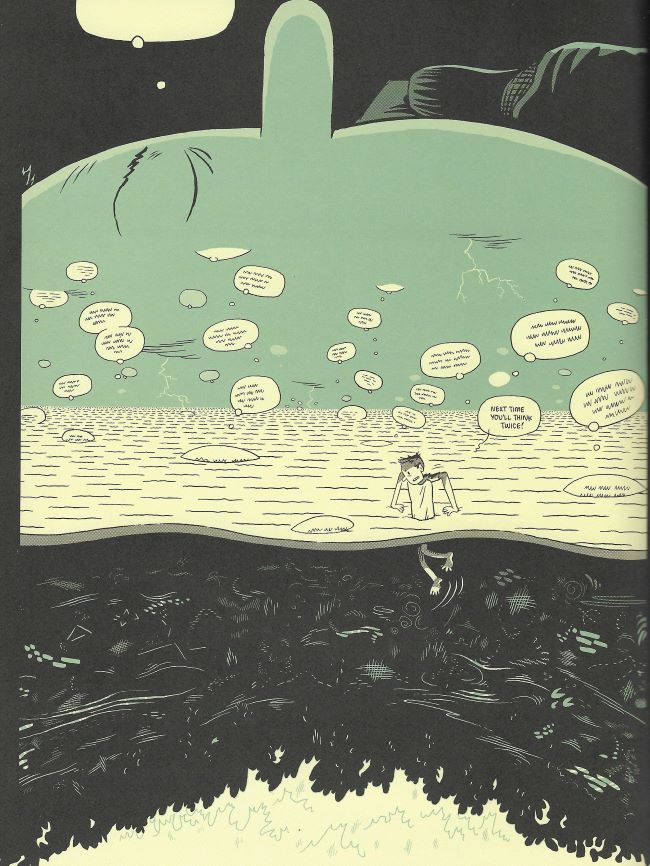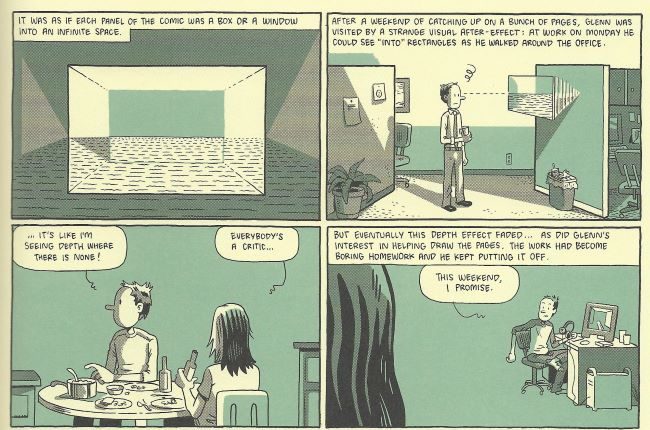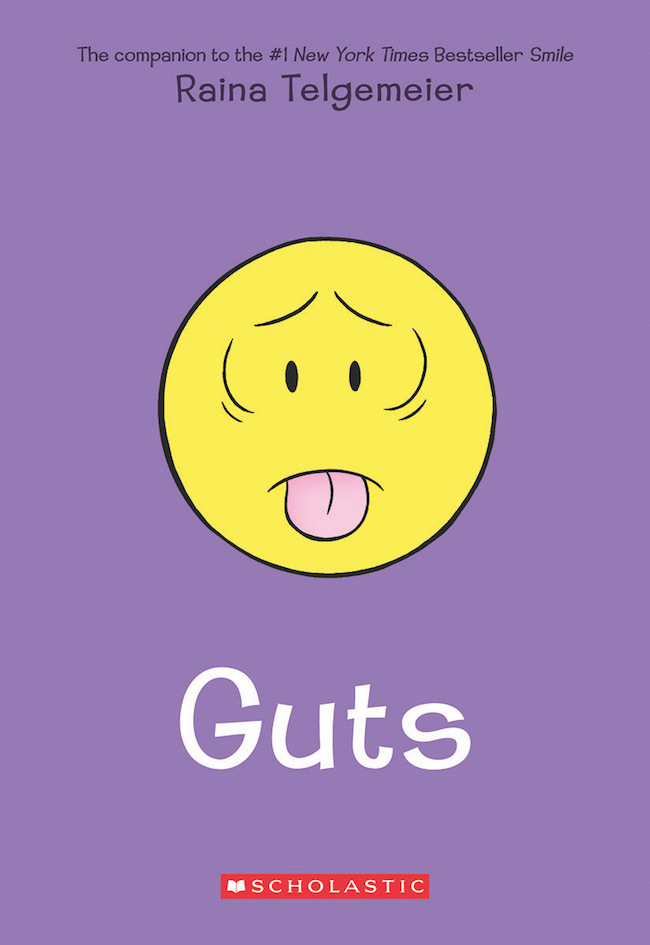 As somebody who has had difficulty sleeping for the entirety of his adult life, I felt an unusually visceral connection to this very cerebral book about a man, Glenn Ganges, who cannot sleep. My dreams, when I dream, are nostalgic: their architecture a undulous mashup of ideal forms premised upon places I have been before. I am not an esoteric dreamer; I collate, and superimpose, to a cancerous effect on the maps of those schools and hotels across which I find myself chased, or pursuing something, or forgetting something else, or, occasionally, fucking.
As somebody who has had difficulty sleeping for the entirety of his adult life, I felt an unusually visceral connection to this very cerebral book about a man, Glenn Ganges, who cannot sleep. My dreams, when I dream, are nostalgic: their architecture a undulous mashup of ideal forms premised upon places I have been before. I am not an esoteric dreamer; I collate, and superimpose, to a cancerous effect on the maps of those schools and hotels across which I find myself chased, or pursuing something, or forgetting something else, or, occasionally, fucking.
There is a little of that in The River at Night. The book collects a six-issue stapled series titled Ganges, four issues of which were published by Fantagraphics Books and Coconino Press, 2006-11, with two additional issues, 2016-17, self-published by the artist, Kevin Huizenga. Those comics were magazine-sized, and this hardcover edition is maybe an inch or so smaller in height and width, which I found to pleasingly sharpen the image. Huizenga's contribution to the toddler-sized Kramers Ergot 7 (Buenaventura Press, 2008) is also included as a prelude, with each of its panels isolated from each other on separate pages, slightly blown up and lacking any of the text that accompanied the original version. So, this--

becomes like this:

You can't read it or anything, but what the Kramers version of the piece did is make its own discreet statement - in which the direct communication of words circle the periphery of the page while unintelligible word balloons ascend high above a lush landscape, suggesting that the cloudy implications of what is said linger beyond the specifics of face-to-face communication like streaks in the sky of being.
The River at Night version, in contrast, establishes a few of the devices to follow in the larger work. For example, on pg. 10, we see the balloons begin to rise:

By pg. 44, empty balloons -- diegetically, the sound of breathing through sleep -- are seen floating away from a mandala, which itself appears earlier in the book as a depiction of time as a circle, of finite matter arranged in every conceivable equation, and, insofar as time is infinite, eventually repeating. Glenn, a sentimental man, imagines this as proof of commonality among diverse peoples, listening to the breath of their partners:

On pg. 90, in a full-splash depicting Glenn's sleepless mind in cutaway, the floating balloons take on another role - as 'bubbles' rising from the soup of the subconscious, fired by a hearth of caffeinated anxiety; he has drunk too much coffee, and cannot sleep!

Various elements of that image later take on their own new forms. On pg. 96, the cutaway of the head is part of a metaphor for the give-and-take of thought and action:

The horizon, as depicted in the pg. 90 cutaway, appears again on pgs. 160-61 as a drawing trick taught to Glenn by Wendy, his wife, who is a cartoonist; this illusion of depth doubles as a symbol of Glenn's inattentiveness to her interests (an infinite distance between people let's say):


And, by pg. 173, the very notion of the 'cutaway' -- coupled with the horizon, the hearth-fired subconscious (now presented as the core of the Earth), and a snaking river, a veritable Ganges -- is reprised in the form of a geological survey, envisioned by the gentleman scientist James Hutton as a means of explicating, from his deist conception of the Earth as a divinely-built system for habitation, the formation of land across the span of time. Of course, this is a metaphor for consciousness:

Presenting different forms of information delivery in dialectic has long been a trait of Huizenga's work, particularly as collected by Drawn & Quarterly, the publisher of The River at Night. In Gloriana (2012), Glenn's thoughts fragment into dozens of tiny slivers of perception, as if he has been touched by the divine; afterwards, an enormous amount of text is devoted to Glenn's explaining a meteorological phenomenon to neighbors, who perceive it as a religious omen. In The Wild Kingdom (2010), dozens of b&w panels of small animals uneasily navigating the human world slam without warning into full-color pages where text and image disconnect into a riot of overstimulation: advertising talk, zoological categorizations and surreal memories, which then dissolve into a wordless slapstick depiction of the Earth’s annihilation, the only release from observing the world. Huizenga is occasionally compared to Chris Ware, in that both artists use the comics form to visualize aloof systems in which human behavior operates, but Huizenga's work is less concerned with the paradoxical distance and inter-relatedness of people that obsesses Ware's conception of time and space, than time and space as the interplay of the individual's conscious and the subconscious, inevitably laden with information.
The River at Night is Huizenga's most elegant presentation of these concerns. Like stray thoughts which recombine in dreams, Huizenga introduces a series of comic book devices that accrue throughout the book and, from that accrual, adopt new contextual definitions, which only serve to further burden sleepless Glenn. The book is divided into 19 sections -- or, 19 movements, to use a Warian musical comparison -- which comprise the prelude and six chapters. Roughly, the chapters follow Glenn from when he is awake and alert in the present (ch. 1), to making specific, narrative recollections of the past (2), to skulking around the house, sleepless, and thinking about how his mind works (3), to contemplating philosophical ideas of time (4), to contemplating scientific, geological ideas of time (5), to tossing and turning in an infinite whirl of synthesized ideas (6). The book's dust jacket assures us that this is all quintessentially "formalist", in what I presume is the very overt manner of designating instruments of form as metaphors inside the action of the story, but I also found it all pretty observant.
The first instance of "The End" in The River at Night appears on pg. 15, and recurs, in variations, throughout the book; by the end of the final chapter, seemingly every page insists that everything is done. This is what insomnia is like for me, when I just lay still. Often, I'll black out for an hour or more, only to awaken without any idea of time’s passage. Other times, I will dream very intensely, though I only really doze for maybe 20 minutes. If I am particularly ill-starred on a given night, I'll become trapped in chains of dreams, where I am aware I'm dreaming, and 'wake up' into a different dream, often very close in its contours to reality. Through the lapping tide of its movements, which often begin with Glenn commenting on how he can't sleep, Huizenga's book captures this sense of a night that becomes endless - which is the human experience that is the seed of the book's ideas about infinite time. By the end of chapter 3, Glenn is fluttering between temporary wakefulness and junk sleep; chapter 4 teases (but does not actually embody) a palindromic structure that underscores this notion of sleeping, waking, sleeping, waking, sleeping, waking, as the protagonist does impossible things, and then restores himself to the supine position, like a gag strip protagonist faced with another episode. In this way, Huizenga zooms in and out of verisimilitude, like the flickering lucidity of a light sleeper.

At the same time, there is something missing. When I dream, I sometimes inhabit people distinct from myself. In times of severe, exhausted anxiety, I've woken up in a delirium, believing myself to be somebody that I'm not. As a means of controlling the narrative here, though, Glenn is almost always Glenn, and what he sees in his mind relates dutifully back to the situation of Glenn. The notion of geological time in chapter 5, for example, is counterbalanced with a flashback to an encounter with a Creationist relative of Wendy's at a funeral luncheon, which itself is surrounded by details as to the tension building between Wendy and Glenn, who have been together since the 1990s, and chafe against one another as longtime partners often do. Or, that's how Glenn imagines it - the contradiction at the heart of this long evening is that in straining his mind to contemplate the whole of existence, Glenn is cast as protagonist of reality.
Yet the effect of this is still interesting to me, the devoted Huizenga reader. While Glenn Ganges is essentially the same character as he is throughout Huizenga's body of work, the Wendy in The River at Night is allowed to be somewhat different from earlier iterations. She is noticeably more spiky here - her introduction in chapter 1 serves specifically to deflate Glenn's highfalutin musings about *time*, and soon the two are arguing about the meaning of a Beatles song; Wendy is stressed out from working on comics for the Japanese market (perhaps the sole giveaway that this serialization began in the '00s), and Glenn offers little response beyond smirking from behind his geology book. Made to react to this livelier Wendy, Glenn seems more supercilious than before; later on, we see a memory where Glenn is drafted as Wendy's art assistant, and flakes out on helping her, for no reason beyond simple boredom. Self-absorption could always be read into Glenn’s character -- to the extent he even exists as a character, rather than predominantly as a vehicle for ideas -- but now Huizenga's text deliberately acknowledges this as trait of his, maybe because Wendy's circumstances are now closer to her author's. At the top of chapter 5, Wendy mentions having given up on making a comic about Glenn going to sleep, because she couldn't figure out how to end it. This is, explicitly, one of the reasons why there was a five-year gap between Ganges #4 and #5: "I had been putting it off for years because I didn’t really know how to end the series," Huizenga said to Marc Sobel in 2014.
Huizenga's solution was to review the serial in terms of its formal aspects, which presented logical solutions to how those phrases might further develop, instead of looking at the thing primarily as a story. This also helps the work feel more coherent as a book, despite taking more than a decade to serialize, because the different depictive strategies don't require so much a consistency of drawing, or narrative pacing, as a consistency of logic - there are even tiny bits of kismet, like when Glenn looks at a newspaper in a section titled "Time Traveling" and thinks "I can't believe people voted for that guy..." In Ganges #1, that was a reference to George W. Bush, but I'm sure Glenn (a Ralph Nader voter in 2000, we are told) feels the same today.

But there is still a lot of ‘story’ here. The effect of time is also felt on what I remember to be the best-reviewed portion of Ganges - "Pulverize”, which originally dropped in 2008, and now occupies much of ch. 2 in The River at Night. A very straightforward narrative flashback to Glenn's years working for a dot-com startup around the turn of the millennium, the section's 21 pages sit somewhat uneasily amidst the rest of the book, in that they build to their own cathartic realization. The story is about office workers playing a multiplayer shooter on their computers after work as the company basically falls apart, with the battle maps in the game functioning as representations of their memories of that time and the people they knew. An older guy who's bad at gaming and on the chopping block for layoffs is memorialized by everyone changing their username to match his, so he can 'win' a match on the final night - it gets a little saccharine. At the time, I was impressed with how it processed Huizenga's perceptual ideas into the form of literary metaphor; its function in the greater text of The River at Night is, similarly, to offer a practical demonstration of how people recall time in abstract terms.
Now, it also feels like a warning. What stands out to me is no longer the camaraderie of the office workers, but the specifics Huizenga offers as to why they are doomed. The company Glenn works for, Requestra, is well-capitalized and avowedly 'casual' in that goofy tech sector way, despite being evidently unprofitable; it's a web-based consultancy, which has made part of its pitch to clients that it doesn't really know what it actually does as a business... because it customizes solutions for you! If you've heard anything in the past few months about, say, the dubious office-leasing startup WeWork, once valued at $1 billion and now a rolling disaster (albeit a magnificently profitable one for its owner), such bullshitting will seem familiar. The boss is a failson with a politician dad, who grins beatifically while explaining how the contracts are just too complex for him to adjust his salary as austerity mounts; after running the company into the ground, he will be awarded a prestigious and lucrative political appointment. The workers make a timid and polite effort at organizing, just enough to beg the company's programming genius founder to save their livelihood, but, of course, a well-rewarded legit genius and a rich fraud will have more in common with each other than with any of their employees, and the effort immediately falls apart.
At the end of the story, Glenn packs up his desk and goes home, having received a small inheritance that can support him and Wendy for a while. Maybe him and Wendy are the type of people who are two or three catastrophes away from destitution, instead of only one. Laying in bed, Glenn tries to take succor in the vastness of time as a way of making precious moments last, but picking up the same newspaper, reading the same bad news - time repeating, so that nothing is ever learned, is a sort of Hell, and there are whispers of Hell in the margins of this book.

The River at Night is a kinder thing than Ganges, though. If you read issue #6 as a serial, it abandons Glenn to wander around in the spiral of space and time; the only evidence that he ever emerges is that Huizenga has since started a new series, Fielder, which depicts Glenn getting up in the morning. The River at Night, however, significantly rearranges the content of its chapter 6, so that Glenn navigates the spiral early, only to find himself in tighter and tighter nightmare-of-information pages, very much like in The Wild Kingdom - a frenzy of dense grids intermingling memories and factoids and bits from earlier in the book, Huizenga's drawing becoming loose and gestural as all semblance of continuity is abandoned. These scenes were also in issue #6 of Ganges, but toward the beginning; the artist Andrew White, in his excellent critical zine on the series, speculated that these were abandoned endings for Wendy's comic of Glenn's insomnia, or even that all of Ganges is Wendy's unfinished work.
I will go further. I have decided that Wendy is actually the author of The River at Night, a book she completed some time after the events depicted. There are little suggestions of this scattered throughout the book -- an occasional omniscient narrator who is clearly not Glenn, or a comedic cutaway to what Wendy is dreaming about, which Glenn cannot possibly know -- but what really pushes me over is how Huizenga rearranges the final chapter so that it ends on a bit of advice, an authorial command, that Wendy gives to Glenn. This isn't really a book that's 'about' its plot, so I don't feel a lot of hesitancy in describing the ending as such:
(This is your chance to run away.)
Pages 17 through 19 of Ganges #6 are now the final pages of The River at Night. Wendy physically interrupts Glenn's endless musings by poking him; she has woken up on her own volition, and wants something to eat, even though it is still nighttime. Glenn makes her a sandwich, and they enjoy the pleasantness of the moment. Wendy then shows Glenn how to fall asleep - he must lay down, and think of every living person he can, and then say their names. Huizenga does not depict these scenes as particularly different from the tormented quasi-dreams from which Glenn just freed himself; thinking is no different than being. When you wake up, your life will continue, and all the accrued information about how time works will recede into the action of living. Huizenga has expressed a distaste for solipsistic formalism, disinterested in contact with the reader, and if this is formalism that engages with people, it is a type that withdraws as Glenn considers people in a way that does not relate to him. He does not look into their minds. He sees them, and names them, and the next page is white with the potential of them.






